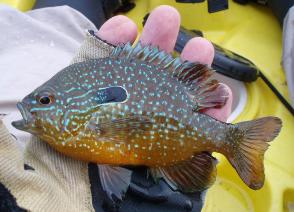Females that enter a male's nest may do so to spawn or to eat the eggs that other females have deposited there.
Photo Credit: Mike Cline via Wikimedia Commons
Lepomis megalotis
Common Name: longear sunfish
Animal Guild: Fish
Class > Order > Family: Teleostei > Perciformes > Centrarchidae
